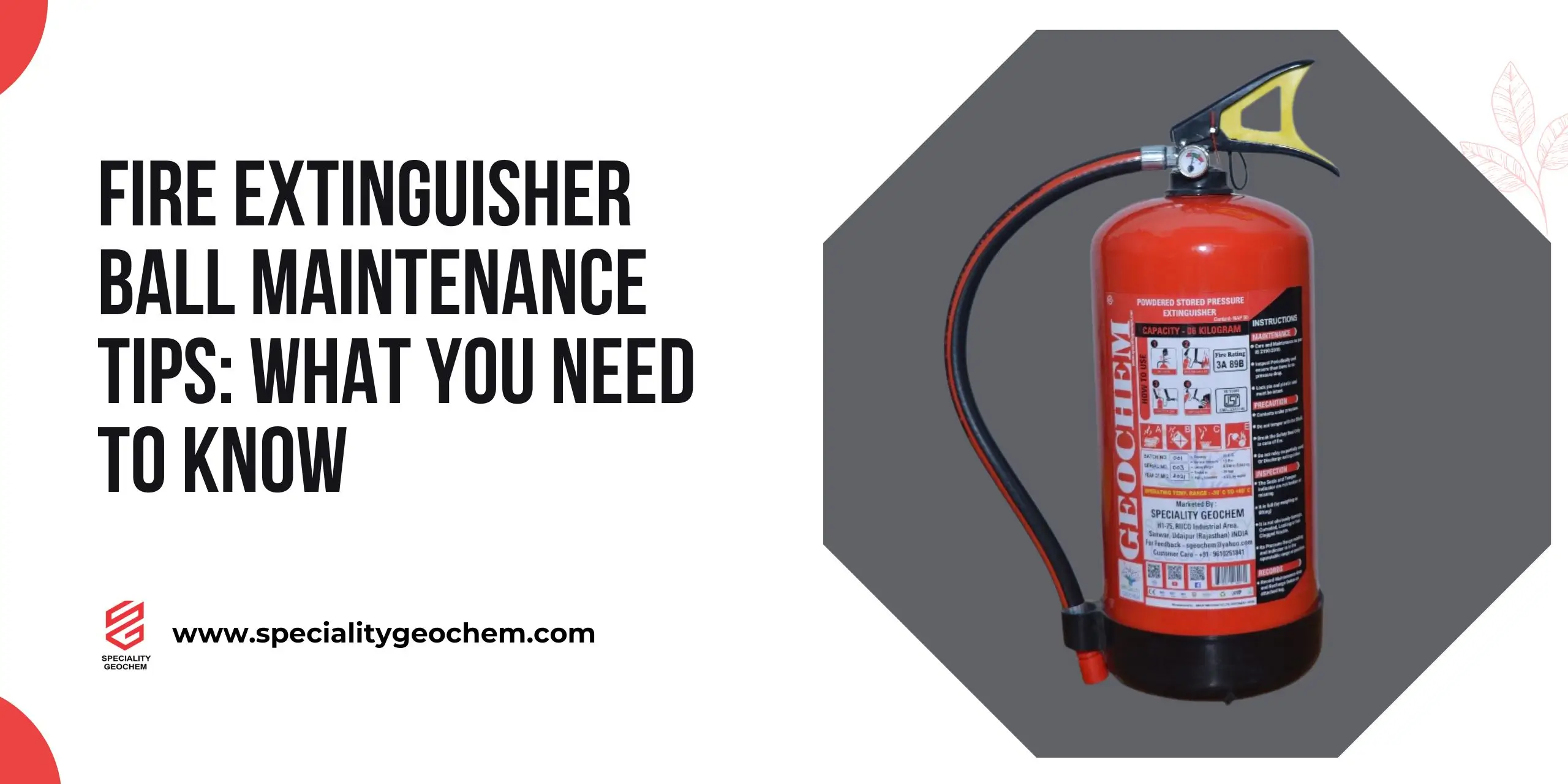Fire Extinguisher Cylinder Maintenance Tips: When it comes to fire safety, installing fire extinguisher cylinders is only the first step. These lifesaving devices stand as the first line of defense during fire emergencies — ready to act in seconds. However, their reliability depends entirely on regular care and maintenance. Just like any safety equipment, fire extinguishers can lose effectiveness if neglected over time.
In this guide, we’ll explore practical and essential Fire Extinguisher Cylinder Maintenance Tips that ensure your safety systems remain in top working condition for years. Whether you’re managing a commercial facility, an industrial plant, or residential property, these maintenance practices can make all the difference during a critical moment.
1. Importance of Fire Extinguisher Cylinder Maintenance
Fire extinguishers are pressurized devices containing specific fire suppression agents — from dry chemicals to clean gases. If they’re not periodically inspected, the pressure can drop, seals can degrade, and extinguishing agents can expire.
Regular fire extinguisher cylinder maintenance ensures:
- Instant readiness during fire outbreaks.
- Compliance with safety regulations and insurance requirements.
- Extended lifespan of the extinguisher unit.
- Prevention of leaks, corrosion, and malfunction.
Neglecting these checks can turn a reliable extinguisher into a liability when you need it the most.
2. Monthly Visual Inspection
The simplest yet most crucial maintenance step is a monthly visual inspection. This doesn’t require technical expertise — just attentiveness.
Here’s what to check:
- Ensure the extinguisher is mounted in an easily accessible location.
- Check for visible signs of damage such as dents, cracks, or rust.
- Confirm that the pressure gauge needle is within the green zone.
- Make sure the safety pin and tamper seal are intact.
- Wipe away any dust or debris that might obstruct usage.
Mark each inspection on a log tag or register to maintain a proper record — a small habit that ensures accountability.
3. Annual Professional Servicing
Once every year, schedule a professional inspection by a certified fire safety technician. This service goes beyond visual checks.
During an annual service, professionals:
- Verify internal pressure levels.
- Test discharge nozzles and valves for blockages.
- Weigh the extinguisher to check agent quantity.
- Inspect hoses for cracks or brittleness.
- Clean, lubricate, and reseal moving parts.
An annual checkup ensures that the extinguisher cylinder continues to meet safety standards and is certified for another operational year.
4. Hydrostatic Pressure Testing
Every few years (typically every 5 years for CO₂ and every 12 years for dry chemical extinguishers), hydrostatic testing becomes necessary.
This process involves:
- Emptying the extinguisher.
- Filling it with water or another test medium.
- Pressurizing it beyond its rated capacity to detect leaks or deformities.
Only licensed technicians should perform hydrostatic testing. Passing this test confirms that the cylinder can safely withstand operating pressures, ensuring long-term safety.
5. Recharging After Every Use
Even if the extinguisher was only used for a few seconds or partially discharged, recharging is mandatory.
Residual pressure might appear sufficient, but internal components could have shifted, or the agent might have settled unevenly. A professional service provider should:
- Refill with the appropriate extinguishing agent.
- Check for valve leakage.
- Replace damaged O-rings and seals.
Never assume a “partially used” extinguisher will work during the next emergency. Recharge it immediately to restore full functionality.
6. Protecting Against Environmental Damage
Fire extinguisher cylinders are often exposed to harsh environments — from outdoor settings to industrial work floors. Prolonged exposure to heat, humidity, or corrosive chemicals can degrade them.
Protective measures include:
- Installing cabinets or covers for outdoor locations.
- Keeping extinguishers away from direct sunlight and heat sources.
- Using anti-corrosion coatings for industrial environments.
- Ensuring proper ventilation in enclosed spaces.
These preventive steps can significantly extend the lifespan of your extinguishers and maintain their appearance and performance.
7. Replacing Expired Extinguishers
Every extinguisher has a service life limit, typically between 10 to 15 years depending on its type and manufacturer. Even with regular maintenance, materials age and safety margins reduce over time.
Check the manufacturing date printed on the label. If the unit has crossed its recommended lifespan, replace it immediately — regardless of how “new” it appears. Modern extinguishers also come with improved technology and eco-friendly agents, offering safer and more efficient fire suppression.
8. Training Personnel for Proper Handling
Maintenance doesn’t end with technical servicing — it also involves user readiness. Every staff member should know:
- How to identify the correct extinguisher type for different fire classes.
- How to operate it using the PASS method — Pull, Aim, Squeeze, Sweep.
- When to use an extinguisher versus when to evacuate.
Untrained personnel can cause more harm than good during a fire. Regular fire drills combined with cylinder inspections promote safety awareness across the workplace.
9. Maintaining Accurate Records
Documentation is a critical part of compliance and accountability. Maintain a fire extinguisher maintenance log that includes:
- Inspection dates and findings.
- Service and recharge details.
- Technician signatures and certifications.
- Hydrostatic test results.
These records not only help in audits but also guide future maintenance decisions and replacements.
10. Partnering with Reliable Manufacturers and Service Providers
Your fire extinguisher is only as good as the company behind it. Choose trusted manufacturers and certified technicians for installation and maintenance.
Partnering with a reputable supplier like Speciality Geochem — India’s leading fire extinguisher cylinder manufacturer — ensures that your equipment meets the highest safety standards and is backed by technical expertise.
They offer advanced fire extinguisher cylinders and automatic fire suppression systems that combine performance, reliability, and ease of maintenance — designed for long-term safety across residential, commercial, and industrial environments.
Conclusion
Fire safety isn’t a one-time investment — it’s a continuous responsibility. Following the right Fire Extinguisher Cylinder Maintenance Tips ensures that your firefighting systems remain dependable in every situation.
From monthly inspections and annual servicing to proper training and documentation, each step plays a vital role in maintaining safety and compliance. A well-maintained extinguisher is more than equipment — it’s peace of mind that stands ready when danger strikes.
Stay proactive, schedule periodic checks, and choose dependable suppliers like Speciality Geochem, a trusted name in fire extinguisher manufacturing and maintenance solutions in India. Because when it comes to safety, prevention is always the strongest defense.

